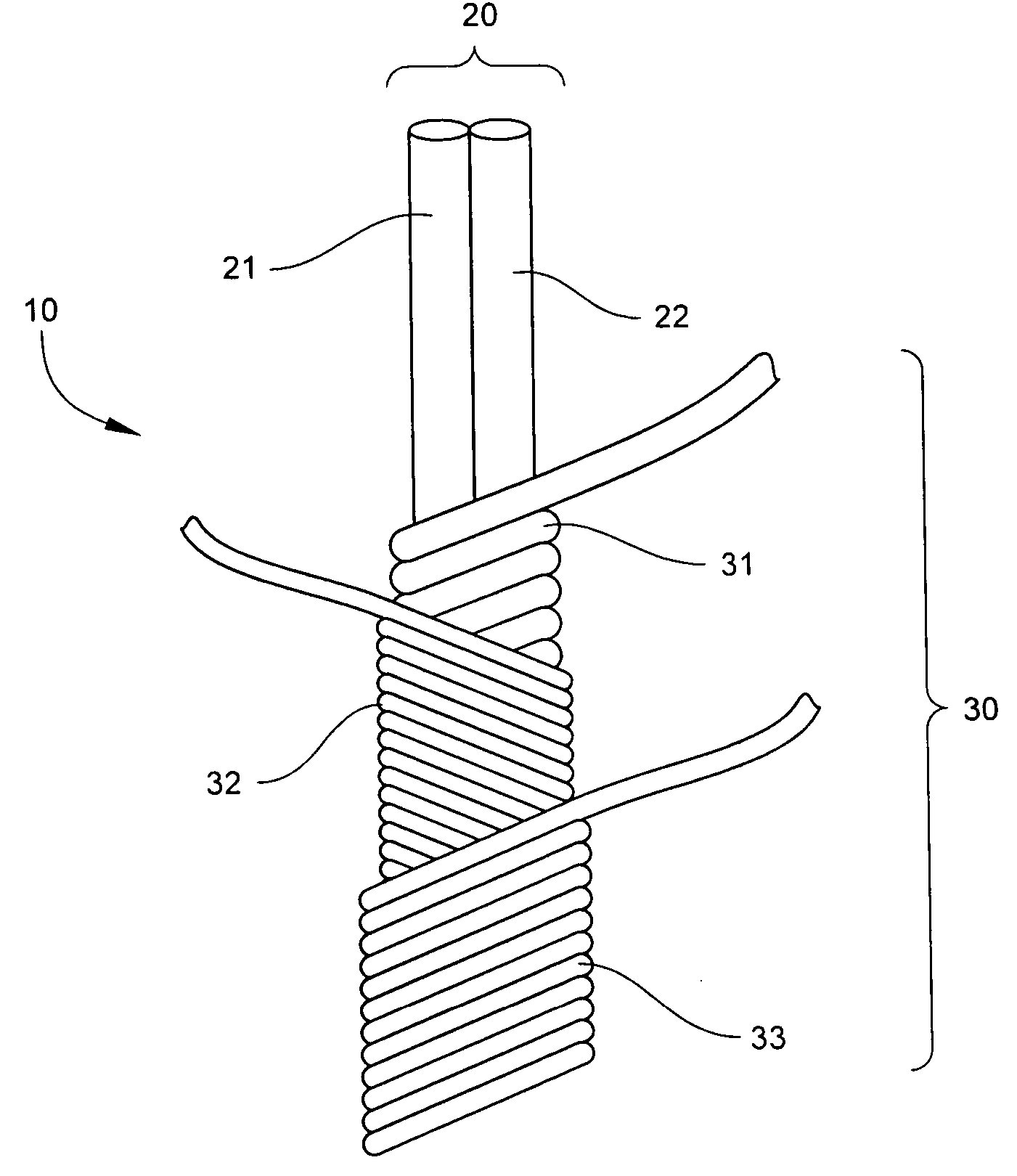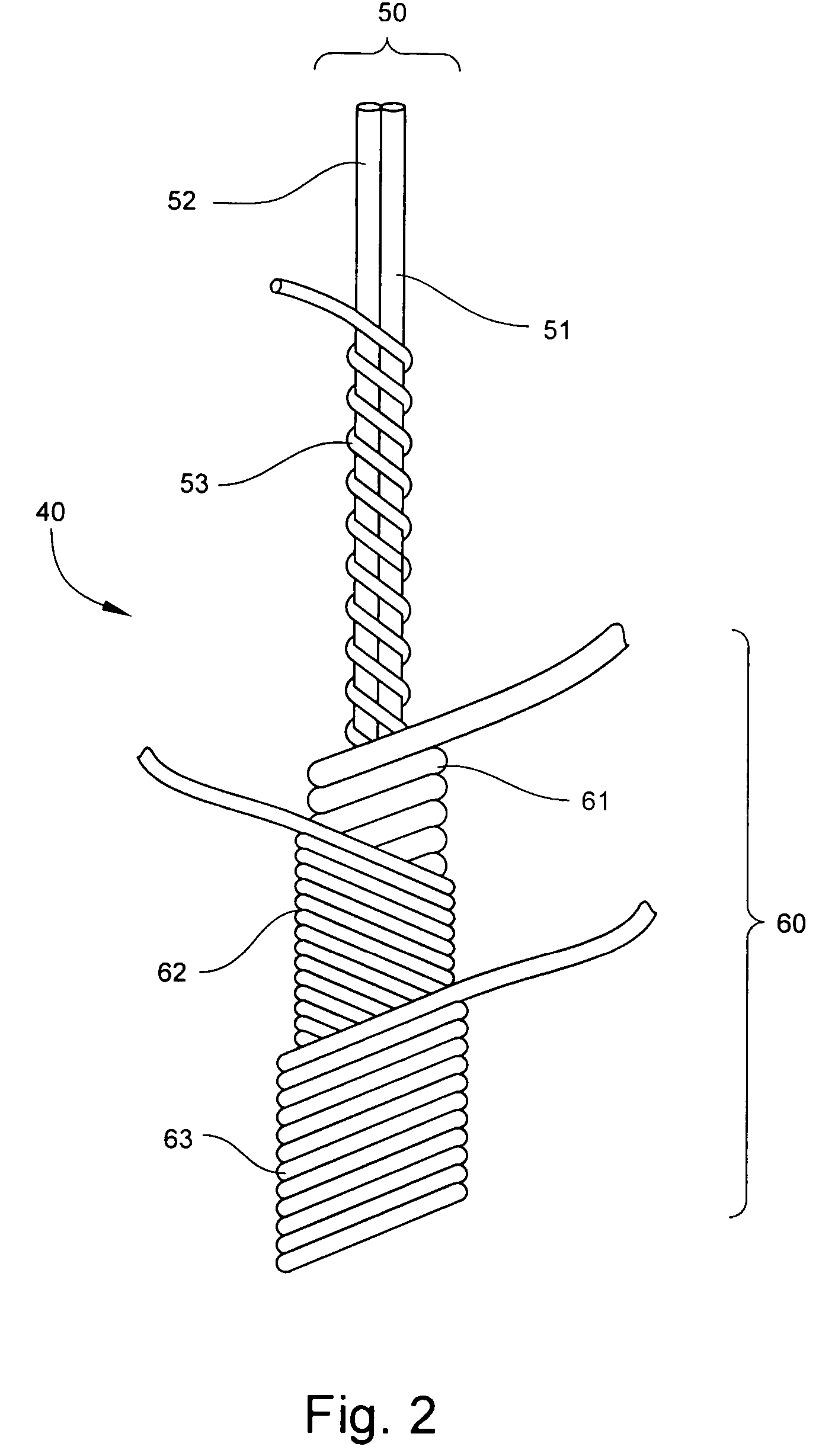Antimicrobial cut-resistant composite yarn and garments knitted or woven therefrom
a composite yarn and antimicrobial technology, applied in the field of antimicrobius, can solve the problems of high cost and inability to be used by applicants, and achieve the effects of facilitating the migration facilitating the movement of moisture, and enhancing the efficacy of the antimicrobial compound
- Summary
- Abstract
- Description
- Claims
- Application Information
AI Technical Summary
Benefits of technology
Problems solved by technology
Method used
Image
Examples
Embodiment Construction
[0049]In general, the invention comprises a cut-resistant yarn which has at least two fiber components, one of which is a core yarn and one of which is a cover yarn. Either or both of the core yarn and cove yarn may themselves be comprised of two or more yarns oriented together in a predetermined, conventional manner. One of the component yarns serves as a carrier yarn for an antimicrobial agent. The carrier yarn may be part of he core or part of the cover. The resulting yarn achieves cut resistance at Level 2 or above as defined and determined by the Cut Protection Performance Test (ANSI / ISEA standard 105-2000).
[0050]Referring now specifically to the drawings, a protective yarn according to the present invention is illustrated in FIG. 1 and shown generally at reference numeral 10. The protective yarn 10 is a composite which includes a core member 20 and a cover member 30. The core member 20 includes a strand of fiberglass 21 and a strand of polypropylene 22. As shown in FIG. 1, the...
PUM
| Property | Measurement | Unit |
|---|---|---|
| diameter | aaaaa | aaaaa |
| tensile strength | aaaaa | aaaaa |
| molecular weight | aaaaa | aaaaa |
Abstract
Description
Claims
Application Information
 Login to View More
Login to View More - R&D
- Intellectual Property
- Life Sciences
- Materials
- Tech Scout
- Unparalleled Data Quality
- Higher Quality Content
- 60% Fewer Hallucinations
Browse by: Latest US Patents, China's latest patents, Technical Efficacy Thesaurus, Application Domain, Technology Topic, Popular Technical Reports.
© 2025 PatSnap. All rights reserved.Legal|Privacy policy|Modern Slavery Act Transparency Statement|Sitemap|About US| Contact US: help@patsnap.com



